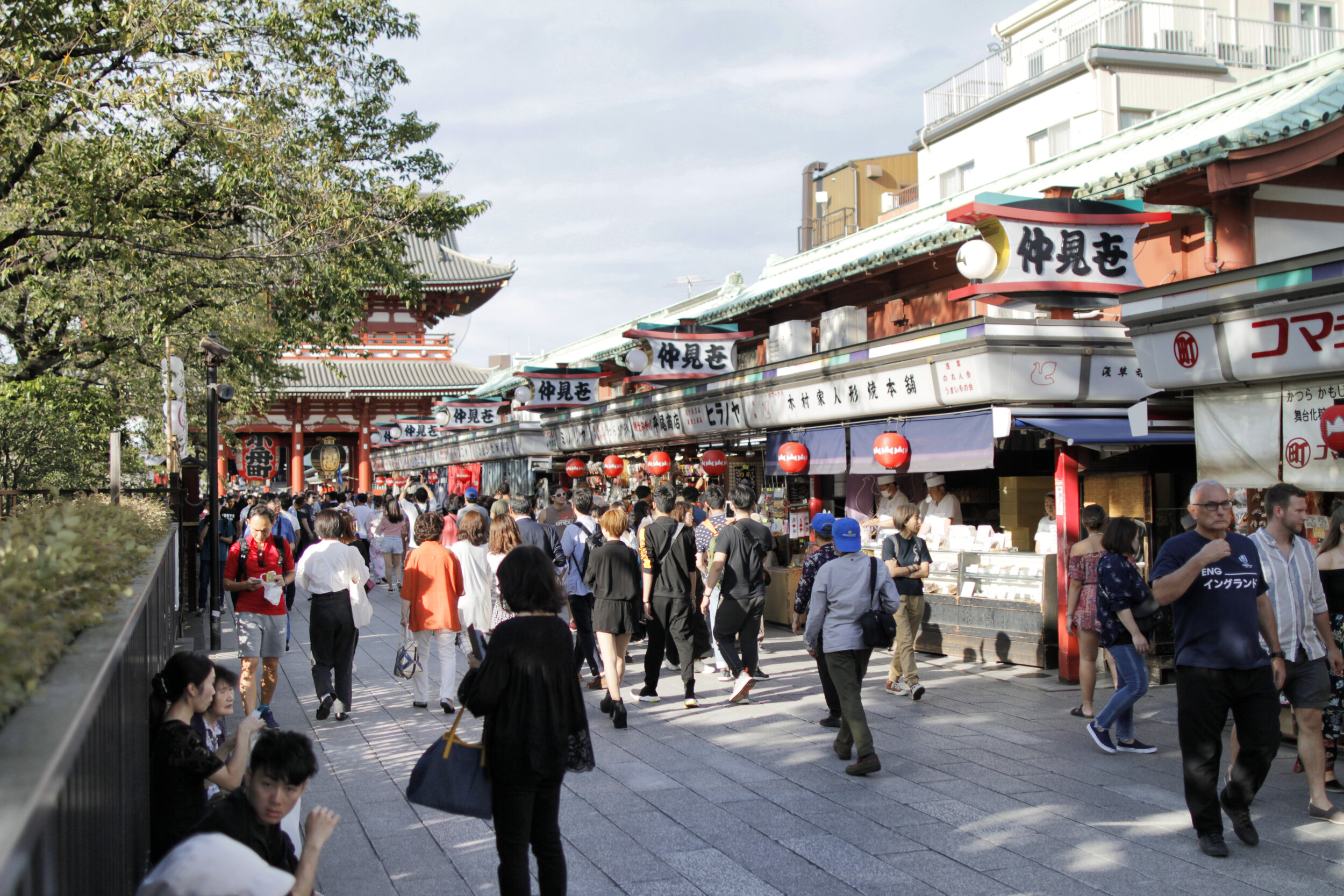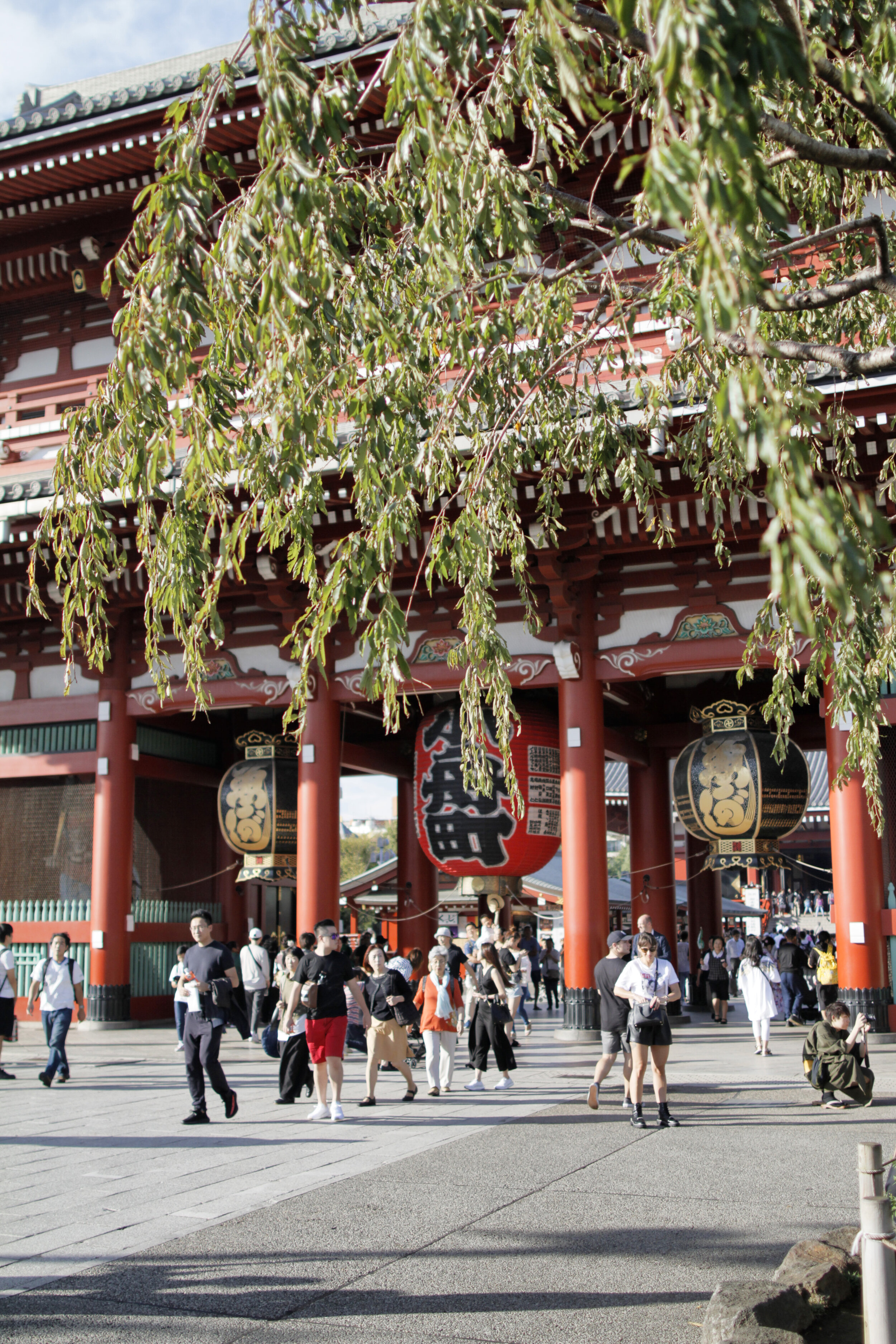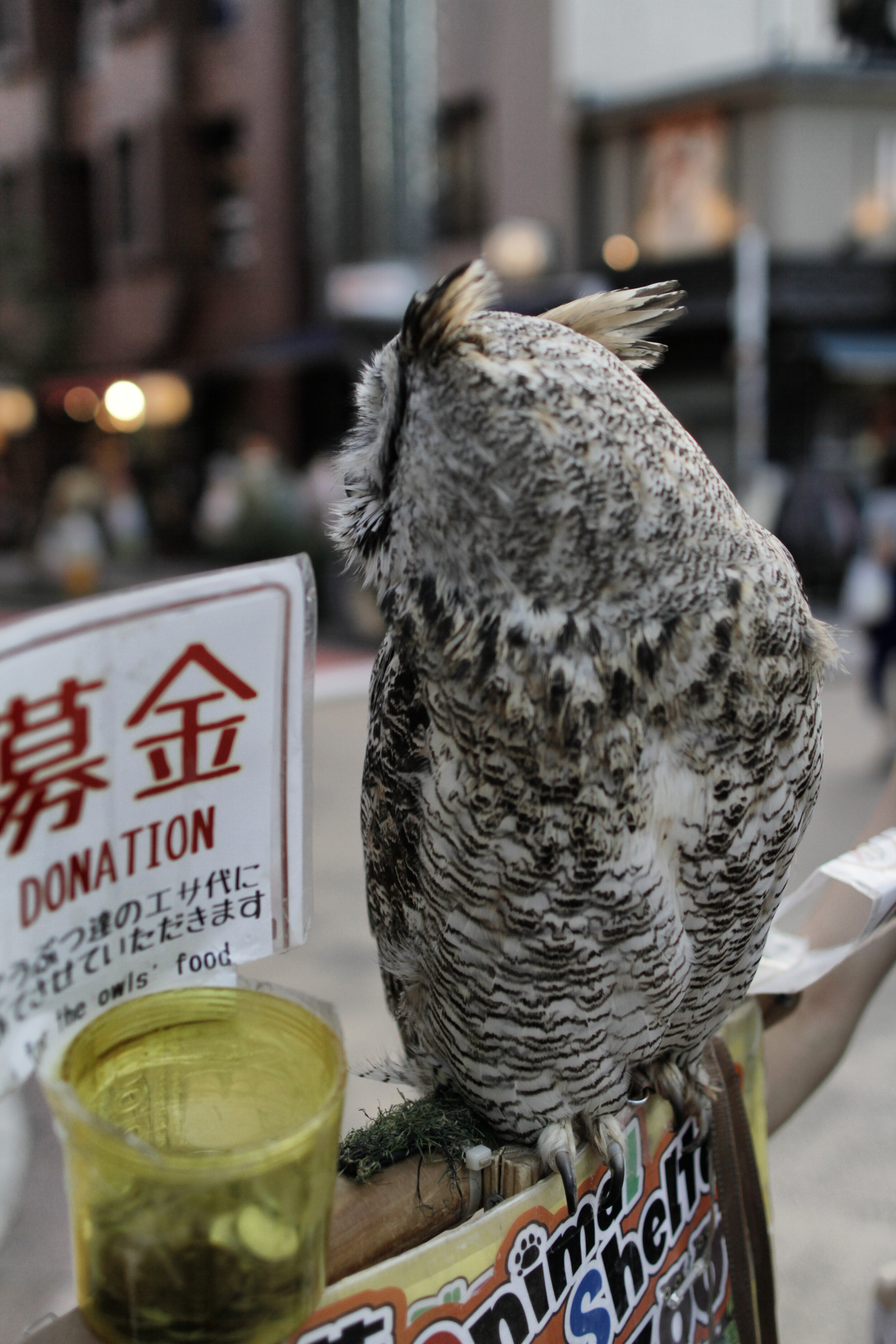Tokyo: Largest Metropolitan in the World
Best things to do in Tokyo: experience a vibrant culture, high-tech urban landscape & unique blend of modern & traditional with this travel guide.
Oh, Japan. Japan has held a precarious position in my heart for some time now. My younger brother studied Japanese in high school and took an enviable ski trip there when I was teaching English in South Korea, stopping by to visit on the way.
However, I learned pretty quickly while living in Korea that Koreans don’t particularly like Japan for all the pain they inflicted during World War II, so I wasn’t quite sure how I felt myself.
That said, today, Japan and Tokyo specifically, are known for modern architecture, historical sites, vibrant nightlife, delicious cuisine and advanced technology but it was finally time to decide for myself. And although I was riddled with excitement arriving in Japan because, well, Japan rules, it wasn't always easy to navigate.
Originally a fishing village called Edo, Tokyo became a political center in 1603 and continued to rise during the 18th century. After devastation by the 1923 Great Kantō earthquake and the Allied bombing raids during World War II, the city underwent a speedy reconstruction and expansion ultimately landing Tokyo as the largest urban economy in the world.
My first stop in Japan was Tokyo, Japan’s crowded capital city that uniquely melds two worlds: ultramodern skyscrapers alongside traditional historic landmarks.
From Tokyo, I took a day trip into the forested mountains of Nikkō for some much needed mountain worship.
Then, I was off to the charming temples, gardens and geisha of Kyoto, about three hours west of Tokyo by bullet train.
With Kyoto as a base, I took a few special day trips to explore thousands of torii gates at Fushimi Inari Shrine, wander the emerald green bamboo forests of Arashiyama and admire the wild and curious deer of Nara Park.
Best Things to Do in Tokyo
Land / In Tokyo
Taste / Japanese breakfast
Discover / Tasty delicacies at Toyosu Market
Gaze / Awestruck at Sensō-ji Temple
Enjoy / The delicate flavors of kamameshi
Give / A hoot at an owl cafe
Caffeinate / In the Nakameguro neighborhood
Marvel / At Shibuya crossing
Sip / On boba in the Harajuku District
Slurp / Hot & spicy noodles
Best Things to Do in Tokyo
Land in Tokyo
Japan was a long time coming. After teaching English in South Korea for four years I had numerous opportunities to travel throughout Southeast Asia visiting countries like Taiwan, Singapore, Malaysia, Cambodia, Indonesia, Philippines, Thailand and Vietnam but Japan always felt just out of reach…until now. My flight from LAX to NRT, Tokyo Narita, lasted about 10 hours with Japan Airlines. They were incredibly kind, swapping my meal for something gluten free. Once in Japan, I picked up my luggage, pulled out about $300 USD from the airport ATM and jumped on the train after buying a Skyliner ticket to Ueno Station near my hostel.
Tip / Purchase a Japan Rail pass before entering the country and activate it at the airport metro or at other large station. Note, once activated, the countdown begins. Also, be aware there are several lines that the Japan Rail pass does not cover, nor does it cover the local trains.
About an hour west of the airport, Tokyo can be reached the fastest with the Keisei Skyliner. Before arriving in Japan, I purchased the Japan Rail Pass, thinking it could be used everywhere but realized pretty quickly it’s not accepted on local trains and other specific lines (see Japan Rules for more details). Once on the train, I hopped off after two stops and used Google maps to reach my hostel, Sadou Hostel, by foot. My 12-bed female dorm was a bit cramped but cute enough. Sadou Hostel provides free towels, lockers and house slippers as you enter, so shoes off please.
Taste Japanese Breakfast
What does one have for breakfast in Japan? In the morning, I ran out in a panic looking for something other than…bread. Being #glutenfree is often tricky while traveling so I always pack protein bars for emergencies and leave extra time to hunt for food. Luckily, the front desk recommended a spot down the street for fish, Shinpachi Shokudo Shinjuku.
From the picture menu, I chose salted red rockfish with rice and miso soup. It was simple but very tasty.
Discover Tasty Delicacies at Toyosu Market
With fish on my mind I made my way to Toyosu Market in Tokyo Bay. Toyosu Market replaced the historic Tsukiji Fish Market which had been open since 1935 and was known as the largest wholesale fish and seafood market in the world. With its closing in 2018, operations moved to Toyosu Market, also called the outer fish market.
Outside in the open air, the fish market had tons of fresh seafood sprinkled up and down the rows of vendors, along with other snacks like skewers, dumplings and rice cakes. There was crab, octopus, squid, oysters, sea urchin, lobster, all variety of fish and so much more.
As expected, Japan offered so many special treats. Back and forth I went, peaking into each stall buying flavored rice cakes covered in matcha green tea or black sesame (so gooey) and various types of soy beans.
Workers were busy preparing seafood, slicing and cutting, spreading out pieces into beautiful rows of glistening fish. Occasionally, vendors offered samples of whatever they were selling as you walked by or shouted things I couldn’t understand in Japanese.
Keeping my eyes open for tuna, my favorite fish, I tried the fresh sashimi. It was delicious but not any more so than what I’ve had in the States and elsewhere. The prices were shocking too; more expensive than I imagined. My dreams of getting full on raw fish dwindled quickly.
My favorite experience was getting an iced matcha latte from the Matcha Stand Maruni. A man standing out front made it like an exact science. As a crowd gathered, he followed each step carefully; mixing simple syrup with green matcha powder, adding hot water from a beautiful black kettle, stirring slowly with the chasen (bamboo whisk) and pouring the foamy mixture into creamy iced milk. Authentic matcha powder is so strong that only a tiny bit is needed to make a rich and flavorful drink.
Expect to find local goods in many of the shops. One I discovered was filled with traditional Japanese ceramics, cookware and other trinkets. I picked up a few soy sauce dishes and chop stick trays with hand painted vegetables like onions and cucumbers.
Gaze Awestruck at Sensō-ji Temple
After the market, the Hama-rikyū Gardens at Shimbashi Station were a nice break. Hama-rikyū Gardens are a public park in Tokyo open since 1946. The grounds are covered with colorful flowers, historical statues and a seawater moat filled by Tokyo Bay. There’s even a water bus in the park for an extra fee along with a 300 year old Pine tree planted to honor the great work of improving the gardens so long ago.
Pretty early on I realized the Japan Rail pass was not for short distance train rides. Instead, use a day pass for the local trains and add money as you go. From the gardens, I made my way to the train station to explore another area of the city.
If you find yourself in Tokyo, don’t miss Sensō-ji Temple and Nakamise Shopping Street at Asakusa Station. Sensō-ji Temple is an ancient Buddhist temple and is Tokyo’s oldest and one of its most significant. It’s also the world’s most visited spiritual site with over 30 million visitors annually. And I’d be willing to bet at least half those people were there on this day.
Nakamise Shopping Street runs along the main approach to Sensō-ji Temple and is marked by entering through the outer gate named Kaminarimon or ”Thunder Gate”. Inside the massive gate is an enormous red and black paper lantern hanging from below its roof. This gate was first built in 941 but was destroyed by a fire in 1865 and then rebuilt in 1960. Underneath, tourists were posing for photos one after another without an end in sight.
Down the shopping street tourists from all over the world and young students in uniforms scrambled in every direction. Many of the trinkets being sold weren’t super interesting but the beautifully painted lanterns lined up in rows were stunning.
At the end of Nakamise Shopping Street is the inner of the two large entrance gates, Hōzōmon, ultimately leading to Sensō-ji Temple. A two-story gate, the Hōzōmon's second story holds many of the Sensō-ji's treasures while the first gate holds two large sandals, three lanterns and two statues.
Next to the temple is a five-story pagoda, the Asakusa Shinto Shrine. This shrine, also known as Sanja-sama or the Shrine of the Three Gods is one of the most famous Shinto shrines in Tokyo. It honors three men who founded Sensō-ji and is one of the only two buildings in the area to survive World War II.
The temple and shrine were so massive it was nearly impossible to capture them entirely in one image. Instead, only bits of each could be shot in detail.
Enjoy the Delicate Flavors of Kamameshi
For a more intimate experience, wander around the streets behind the main shopping area and discover cute restaurants and shops. One such restaurant serving kamameshi, a rice, meat and vegetable dish served in a small pot, was my favorite.
After entering the dimly lit restaurant, I sat patiently waiting for my dish as I gazed out the front window watching passersby.
The kamameshi dish took about 30 minutes to prepare but it was definitely worth the wait. It was incredible; delicate and light but full of flavor. My dish called combination (matsu) had shrimp, crab, chicken, mushroom and greens all for $15 USD.
And as all things in Japan, it was stunning in presentation.
The next treat I found was soft-serve matcha green tea ice cream. Even without tasting the cone, it was delicious.
Give a Hoot at an Owl Cafe
Even further, I bumped into a girl with a large owl and donation bucket. She was collecting money for which I can only assume was to help animals in need. Behind her was an Owl Cafe charging $10 USD to enter, so why not?
Inside the owl cafe there were owls, monkeys, foxes, flamingos and other lesser known creatures. It was super cool to see so many animals up close and guests were even allowed to pet the owls on the head and back (use the back of your hand).
Many of the owls were so delicate I thought they had to be fake but if I stood there long enough they would eventually prove me wrong, rotating their heads or shuffling side to side.
As the evening closed, I slowly walked back to the hostel stumbling upon a bright red shrine. Inside, I found others praying as I peaked around each corner catching different sight lines.
One of my favorite things about Japan is the intense attention to detail and craftsmanship, whether it’s a temple or bowl of rice.
Caffeinate in the Nakameguro Neighborhood
The next morning I returned to Shinpachi Shokudo Shinjuku for breakfast once again. This time I tried the breakfast special with fried eggs, bacon, rice and miso soup. It was quite delicious and I assume the Japanese version of an American breakfast.
Because I wanted to try another hostel in Tokyo, I checked out of Sadou Hostel and moved on to Kaisu for the next two days. It’s always nice to experience more than one neighborhood on foot and moving in and out of hostels is the best way to do so. Since check in wasn’t until 3 p.m. I locked up my bags and went out for the day.
First up was Nakameguro, a hip residential area with quiet walking paths flanking the Meguro River. Just off the train was a tiny sushi restaurant (I could really get used to this).
After a little confusion, I discovered the walking paths next to Maguro River. Lined with coffee shops, Sidewalk Stand was an adorable option for an almond iced latte.
Cherry trees formed tunnels of blossoms along the river and it was gorgeous in the afternoon light. Many of the shops and restaurants were closed for the day but even so, this was one of my favorite areas in Japan and I’d love to return to experience more one day.
Marvel at Shibuya Crossing
After such a peaceful start to the day I pumped myself up for Shibuya Crossing, one of the busiest railway stations in the world and not to be missed. Shibuya is famous for its scramble crossing called Shibuya Crossing, which I’m sure you’ve seen in photos.
As the traffic lights turned red, people gathered until there was barley any room to see in front of your face. Once the light turned green, all at once everyone rushed to cross the street into the shopping district.
Almost immediately, I found the area overwhelming so I began heading toward Harajuku district, a very pleasant walk.
Sip on Boba Tea in the Harajuku District
Sip on Boba in the Harajuku District
The walk from Shibuya Crossing to Harajuku was one of the best I’d experienced in Tokyo. It was a warm fall day and the mile walk was peaceful even though the streets were filled with activity. Clothing and home goods stores fell one after another selling one of a kind items. Japan’s unique sense of style offers such an amazing perspective; goods are special, intricate and crafted with the best quality in mind so bring some extra cash.
As the crowd began to thicken, I reached the Harajuku district known as Takeshita Street. This area is a pedestrian shopping street packed full of fashion boutiques in the Lolita style, countless restaurants and cute cafes selling crepes, teas and ice cream.
It was wild to see the shops packed full of Lolita style clothing and pedestrians dressed up, as well. Lolita fashion is a subculture in Japan mainly influenced by Victorian clothing and styles from the Rococo period. It’s usually represented by “cuteness” and is sometimes categorized as gothic, classic or sweet.
Near the end of Takeshita Street, I popped into one of the tea cafes for some green bubble tea with tapioca pearls, just before reaching Hakajuka train station.
The next morning it was off to Nikkō, a tiny little town in the forested mountains north of Tokyo. There lies Nikko National Park, most famous for Toshogu, Japan’s most lavishly decorated shrine and the mausoleum of Tokugawa Ieyasu, the founder of the Tokugawa shogunate, a hereditary military dictatorship of Japan from 1192 to 1867.
Slurp Hot & Spicy Noodles
After my day trip to Nikkō, I landed back at Akasaka Station near my hostel. Feeling soggy and in need of something warm, I came across a cute little noodle shop called Dandan Noodles. With some help from another customer, I ordered my noodles from a vending machine at the front door, gave my ticket to the chef and waited patiently.
As I sat down at the bar, I was given a little bowl with sesame seeds and a grinder, plus a bib. I chose my spice level (one to three) and requested shaved green onion on top. A few moments later, my steaming bowl of ramen arrived. The noodles had a spicy meat broth that was both sweet and sour. Talk about satisfying. #dreamsdocometrue #offtheglutenfreewagon #onlyinjapan
So after a few fun filled days in Tokyo, Kyoto was up next. I’d be using the Shinkansen (bullet train) two hours southwest from Tokyo Station to Kyoto Station.









































































